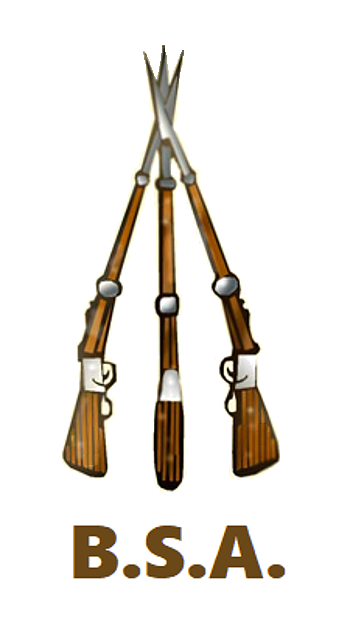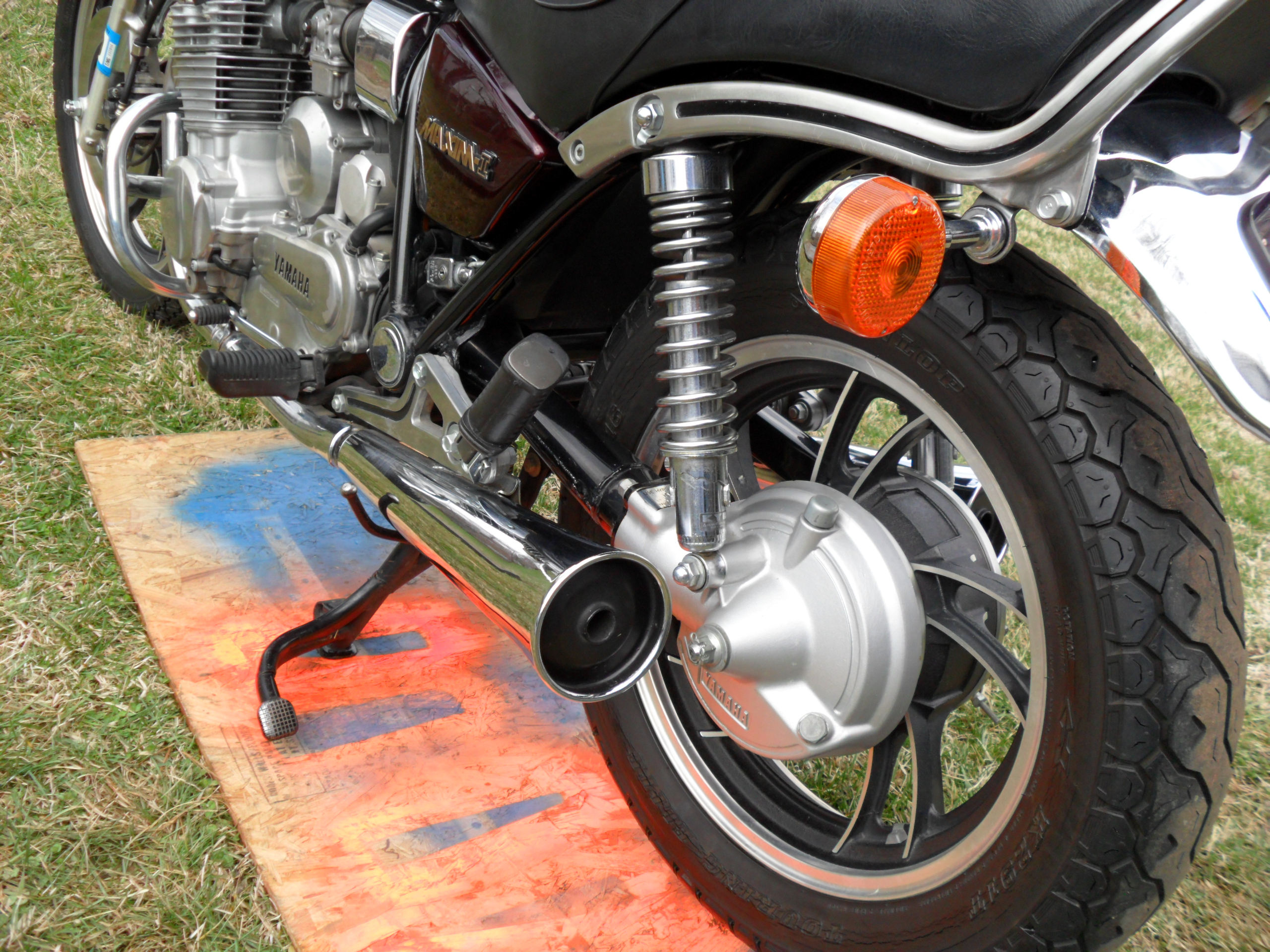|
BSA C12
The BSA C12 was a British pre-unit motorcycle manufactured by the Birmingham Small Arms Company from 1956 to 1958. The C12 used the same engine as the earlier C11G with the four-speed gearbox, but in a more modern chassis featuring a swinging arm rear suspension. Minor engine modifications meant it was also far more reliable. References C12 C12, C.XII or C-12 may be: * LNER Class C12, a class of British 4-4-2T locomotives * C12 Workmen's Compensation (Agriculture) Convention, 1921 * C-12 ''Huron'', a logistics support aircraft of the U.S. Military (military versions of the Beechcraft ... Single-cylinder motorcycles {{Motorcycle-stub ... [...More Info...] [...Related Items...] OR: [Wikipedia] [Google] [Baidu] |
Birmingham Small Arms Company
The Birmingham Small Arms Company Limited (BSA) was a major British industrial combine, a group of businesses manufacturing military and sporting firearms; bicycles; motorcycles; cars; buses and bodies; steel; iron castings; hand tool, hand, power tool, power, and machine tool, machine tools; coal cleaning and handling plants; sintered metals; and hard chrome process. After the Second World War, BSA did not manage its business well, and a government-organised rescue operation in 1973 led to a takeover of such operations as it still owned. Those few that survived this process disappeared into the ownership of other businesses. History of the BSA industrial group Machine-made guns BSA began in June 1861 in the Gun Quarter, Birmingham, England. It was formed by a group of fourteen gunsmith members of the Birmingham Small Arms Trade Association specifically to manufacture guns by machinery. They were encouraged to do this by the War Office which gave the BSA gunsmiths free access ... [...More Info...] [...Related Items...] OR: [Wikipedia] [Google] [Baidu] |
BSA C11
The BSA C11 is a British motorcycle manufactured by Birmingham Small Arms Company (BSA) at their factory in Armoury Road, Small Heath, Birmingham, between 1939 and 1956. Actor Steve McQueen owned a 1951 BSA C11. Development The BSA C11 was a pre-unit single-cylinder developed before the Second World War from the sidevalve C10. Fitted with overhead valves and displacing 249cc, the C11 was launched in 1939 and continued to be developed into the 1950s. The C11 frame was improved in 1951 when BSA added plunger rear suspension. Military W-C11 Although British armed forces only used a few BSA C11s as lightweight transport (having selected instead the BSA M20) in 1940 530 C11s were ordered in military specification by the Office of the High Commission of India. Modifications for war use included a rear carrier over the mudguard, an additional air filter on the fuel tank and a mag dyno in place of the coil. BSA C11G Problems with the gearboxes were addressed by the model C11G, ... [...More Info...] [...Related Items...] OR: [Wikipedia] [Google] [Baidu] |
BSA C15
The BSA C15 was a 250 cc single-cylinder ohv motorcycle manufactured by the British company BSA from September 1958 until 1967, and was BSA's first four-stroke unit-construction bike. For most of that period, after the introduction of 'Learner Laws' in 1961, a 250 cc was the largest capacity solo machine that a learner could ride unaccompanied when displaying L-plates in the United Kingdom. A road-going ''Sports'' derivative was added in 1961, and off-road versions, for Trials and Scrambles, were also available in the range. ''Motor Cycle'', 22 April 1965, pp.508-511 ''C15 Riders Report'' collated by ''Mike Evans''. Accessed 2014-10-18 Producing only , the C15's lack of power meant that it was hard for the BSA to compete with the more sophisticated Japanese motorcycles (such as the Honda C71 and CB72) which began arriving in the UK in the 1960s. Development BSA acquired the Triumph marque in 1951, and the BSA C15 250 cc four stroke was derived from the 200&n ... [...More Info...] [...Related Items...] OR: [Wikipedia] [Google] [Baidu] |
Overhead Valve
An overhead valve (OHV) engine, sometimes called a ''pushrod engine'', is a piston engine whose valves are located in the cylinder head above the combustion chamber. This contrasts with earlier flathead engines, where the valves were located below the combustion chamber in the engine block. Although an overhead camshaft (OHC) engine also has overhead valves, the common usage of the term "overhead valve engine" is limited to engines where the camshaft is located in the engine block. In these traditional OHV engines, the motion of the camshaft is transferred using pushrods (hence the term "pushrod engine") and rocker arms to operate the valves at the top of the engine. Some early intake-over-exhaust engines used a hybrid design combining elements of both side-valves and overhead valves. History Predecessors The first internal combustion engines were based on steam engines and therefore used slide valves. This was the case for the first Otto engine, which was first succ ... [...More Info...] [...Related Items...] OR: [Wikipedia] [Google] [Baidu] |
Single-cylinder Engine
A single-cylinder engine, sometimes called a thumper, is a piston engine with one cylinder. This engine is often used for motorcycles, motor scooters, go-karts, all-terrain vehicles, radio-controlled vehicles, portable tools and garden machinery (such as lawnmowers, cultivators, and string trimmers). Single-cylinder engines are made both as 4-strokes and 2-strokes. Characteristics Compared with multi-cylinder engines, single-cylinder engines are usually simpler and compact. Due to the greater potential for airflow around all sides of the cylinder, air cooling is often more effective for single cylinder engines than multi-cylinder engines. This reduces the weight and complexity of air-cooled single-cylinder engines, compared with liquid-cooled engines. Drawbacks of single-cylinder engines include a more pulsating power delivery through each cycle and higher levels of vibration. The uneven power delivery means that often a single-cylinder engine requires a heavier flywheel than ... [...More Info...] [...Related Items...] OR: [Wikipedia] [Google] [Baidu] |
Unit Construction
: ''For the vehicle design where the vehicle's skin is used as a load-bearing element, see Monocoque.'' Unit construction is the design of larger motorcycles where the engine and gearbox components share a single casing. This sometimes includes the design of automobile engines and was often loosely applied to motorcycles with rather different internal layouts such as the flat twin BMW models. Prior to unit construction, the engine and gearbox had their own separate casings and were connected by a primary chain drive running in an oil bath chaincase. The new system used a similar chain drive and both had 3 separate oil reservoirs for engine, gearbox and primary drive. Triumph and BSA were already using cast alloy chaincases and started converting to unit construction in the 1950s. A driving factor behind the BSA/Triumph change was that Lucas had declared an intention to abandon production of motorcycle dynamos and magnetos, and instead produce only alternators. By contrast, V ... [...More Info...] [...Related Items...] OR: [Wikipedia] [Google] [Baidu] |
Motorcycle
A motorcycle (motorbike, bike, or trike (if three-wheeled)) is a two or three-wheeled motor vehicle steered by a handlebar. Motorcycle design varies greatly to suit a range of different purposes: long-distance travel, commuting, cruising, sport (including racing), and off-road riding. Motorcycling is riding a motorcycle and being involved in other related social activity such as joining a motorcycle club and attending motorcycle rallies. The 1885 Daimler Reitwagen made by Gottlieb Daimler and Wilhelm Maybach in Germany was the first internal combustion, petroleum-fueled motorcycle. In 1894, Hildebrand & Wolfmüller became the first series production motorcycle. Globally, motorcycles are comparably popular to cars as a method of transport. In 2021, approximately 58.6 million new motorcycles were sold around the world, fewer than the 66.7 million cars sold over the same period. In 2014, the three top motorcycle producers globally by volume were Honda (28%), Yamaha (17 ... [...More Info...] [...Related Items...] OR: [Wikipedia] [Google] [Baidu] |
BSA C11G
The BSA C11 is a British motorcycle manufactured by Birmingham Small Arms Company (BSA) at their factory in Armoury Road, Small Heath, Birmingham, between 1939 and 1956. Actor Steve McQueen owned a 1951 BSA C11. Development The BSA C11 was a pre-unit single-cylinder developed before the Second World War from the sidevalve C10. Fitted with overhead valves and displacing 249cc, the C11 was launched in 1939 and continued to be developed into the 1950s. The C11 frame was improved in 1951 when BSA added plunger rear suspension. Military W-C11 Although British armed forces only used a few BSA C11s as lightweight transport (having selected instead the BSA M20) in 1940 530 C11s were ordered in military specification by the Office of the High Commission of India. Modifications for war use included a rear carrier over the mudguard, an additional air filter on the fuel tank and a mag dyno in place of the coil. BSA C11G Problems with the gearboxes were addressed by the model C11G, wh ... [...More Info...] [...Related Items...] OR: [Wikipedia] [Google] [Baidu] |
Swingarm
A swingarm, or "swinging arm" (UK), originally known as a swing fork or pivoted fork, is a single or double sided mechanical device which attaches the rear wheel of a motorcycle to its body, allowing it to pivot vertically. The main component of the rear suspension of most modern motorbikes and ATVs, it holds the rear axle firmly, while pivoting to absorb bumps and suspension loads induced by the rider, acceleration, and braking. Originally motorcycles had no rear suspension, as their frames were little more than stronger versions of the classic diamond frame of a bicycle. Many types of suspension were tried, including Indian's leaf spring suspended swingarm, and Matchless's cantilevered coiled-spring swingarm. Immediately before and after World War II, the plunger suspension, in which the axle moved up and down two vertical posts, became commonplace. In the latter, the movement in each direction was against coiled springs. Some manufacturers, such as Greeves, used swingarm d ... [...More Info...] [...Related Items...] OR: [Wikipedia] [Google] [Baidu] |
BSA Motorcycles
BSA motorcycles were made by the Birmingham Small Arms Company Limited (BSA), which was a major British industrial combine, a group of businesses manufacturing military and sporting firearms; bicycles; motorcycles; cars; buses and bodies; steel; iron castings; hand, power, and machine tools; coal cleaning and handling plants; sintered metals; and hard chrome process. A government-organised rescue operation in 1973 led to the takeover of BSA-Triumph motorcycle operations by Norton-Villiers, later known as Norton Villiers Triumph. At its peak, BSA (including Triumph) was the largest motorcycle producer in the world. In the late 1950s and early 1960s poor management and failure to develop new products in the motorcycle division led to a dramatic decline of sales to its major USA market. The management had failed to appreciate the importance of the resurgent Japanese motorcycle industry, leading to problems for the entire BSA group. When Norton Villiers Triumph was liquidated in ... [...More Info...] [...Related Items...] OR: [Wikipedia] [Google] [Baidu] |

.jpg)


